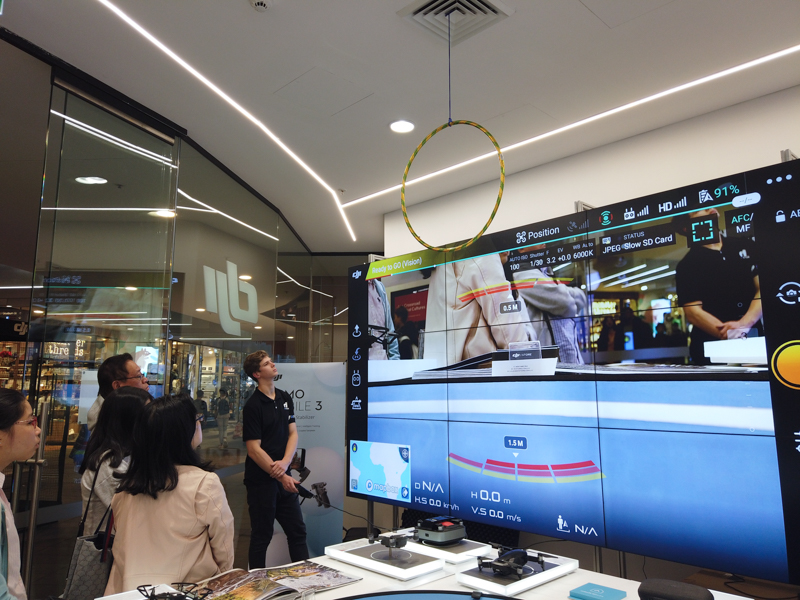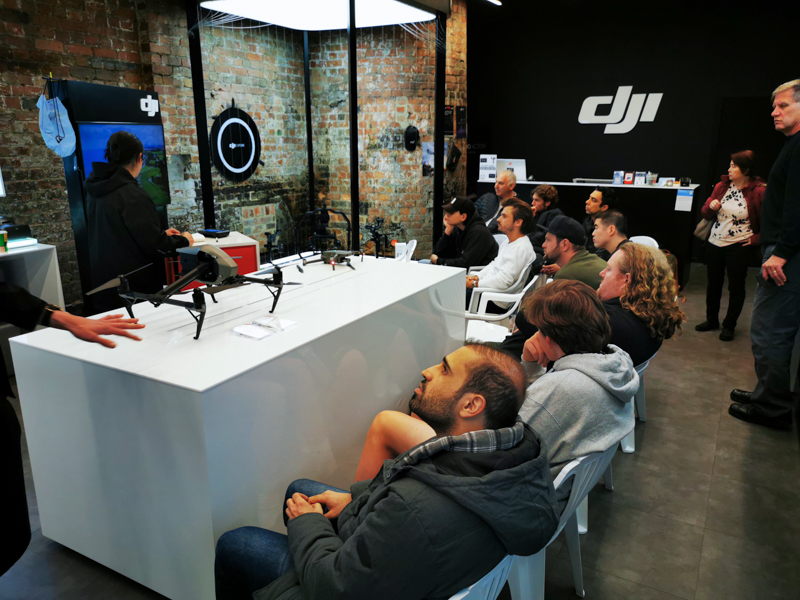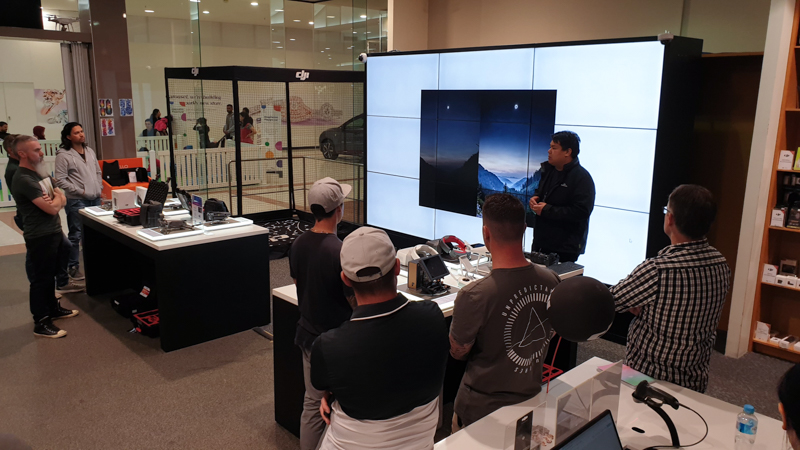New Pilot Experience - 10th of October

Recap!
On
Thursday night, 6-8PM, DJI store hosted their eleventh New Pilot
Experience across all stores. We had another solid turnout this week
with plenty of first time drone owners and future drone owners.
The two hour course took pilots, with varying levels of experience, through some of the basics to the more intermediate skills. Some of the topics that were covered included pre/post flight checklists, photography/videography settings and CASA laws and regulations.
A topic that is covered is flight modes found on the Mavic 2 series.
On the right hand side of the Mavic 2 controller, there is a quick switch with three options. These are the three flight modes which can be swapped on the fly.
P-mode (positioning)
P-mode is the default mode and is the middle of the switch. To get the best results and the most out of P-mode, it is recommended that the GPS signal is strong. Essentially the aircraft will use the GPS and Vision Systems to locate itself, stabilise, navigate between and avoid obstacles. This is the mode you want to be in to use the intelligent flight modes.
When the Forward and Backward facing Vision Systems are enabled and the lighting conditions are sufficient for the sensors to operate in, the maximum flight altitude angle is 25 degrees and the maximum speed that the drone can fly forward is 50 kph, or 31 mph. The maximum backwards flying speed is 43 kph or 27 mph. To achieve these speeds, the drone must not be flying into wind and the sticks must be at full throttle.
If the GPS signal is weak or the Vision Systems are unavailable, the aircraft will automatically change to Attitude (ATTI) mode. This mode can also be entered where there is compass interference. It is recommended to move your drone away from objects, such as metal, that will interfere with the drones compass. If the Vision Systems are disabled, the drone WILL NOT brake automatically or avoid obstacles. This will increase the potential for hazards and is definitely not recommended to fly in. Please note that when flying in ATTI mode, the outside environment has a much greater affect on the drone. Wind will cause the drone to drift as the drone will not have the required information to maintain a steady flight.
If possible, always fly with GPS and with the Vision Systems enabled.
S-mode (sports mode)
In Sports Mode, the Vision Systems are disabled and the aircraft will only use it's GPS for positioning. This means that the drone will not avoid obstacles or brake. The reason behind this is that the drone moves too fast for the sensors to accurately work and that power is better used to move the drone at a faster pace.
The maximum speed that the drone can achieve is 72 kph, 44.7 mph. Intelligent flight modes also cannot operate in this flight mode.
If using sport mode, it is better to use in a large open space to prevent any unnecessary crashes or stress.
You will also notice that the sticks are far more responsive and the drone will be a lot more agile in speed. To avoid accidentally entering sports mode, a prompt will pop up to double check whether you actually want to go into sport mode or not!
T-mode (tripod mode)
This is THE mode to be in for taking photos and smoother videos. There is where the flight speed is limited, giving greater stability when shooting and framing. The maximum flight speed, ascend speed and descend speed are limited to 1 m/s. This is also another good mode for beginners to use as this will prevent any accidentally crashes as the speed is limited.
The intelligent flight modes will not operate in this mode once again.
Notes
Please give the drone more braking room whilst in sport mode as a minimum distance of 30m is required in windless conditions. This is to take the drone from top speed to a full stop.
The descent speed is also increased whilst in sports mode, making it a good option if you need to lower your drone ASAP.
Furthermore,
the workshop also had many questions asked and answered, boosting
everyone's confidence when using the drone. We encourage people to ask
as many questions as possible. Each week, we try and add those questions
into the course to ensure that it is fresh and relevant! We highly
recommend you to sign-up if you haven't already as it is definitely
worth it! Click here to sign up!

Feedback from the evening!
"Perfect atmosphere, perfect people, really helpful, had a wonderful experience"
— Erfan.

Question of the week!
What is precision landing?
The drone will automatically scan and attempts to match the terrain features underneath the drone during return to home to the location where it launched (home point).
When the current terrain matches the Home Point terrain, the Mavic 2 will being landing.
If there is a terrain mismatch, the DJI GO 4 app will let you know and you may need to manually land or use the land features outside of the Return To Home function.
Here are the conditions for Precision Landing to work:
- The Home point must be recorded upon takeoff and must not change during the flight. If you change the home point during the flight, precision landing cannot work as it won't have a record of what the Home point's terrain features are.
- The drone must take off and ascend to at least 7M before flying horizontally, otherwise it does not have a good gauge of the terrain. To make it easier, simply fly vertically straight up to around 10m before flying in different directions.
- The Home point terrain must maintain the same features, if you took off with a landing pad, land with the landing pad. Do not modify the terrain underneath the drone.
- The Home point must also be distinct and cannot be something very generic like sand or lots of similar grass. Having a distinct feature such as a landing pad will help with the precision landing.
- The lighting conditions must not be too light or too dark, the drone does have LED down-lights for darker environments, but it is preferable to launch and land the drone in a well lit environment.

Further Comments
We are seeing a lot of pilots turning up to the NPE sessions now, please make sure you book in advance to secure your place! We will try to run these sessions for as long as we can. The team really appreciates your support and we will always look after you with your purchase, drone help and more!

Don't miss out on this FREE (only for a limited time) event!

If you have any questions regarding the NPE or this article, please do not hesitate to contact us at info@d1store.com.au.
